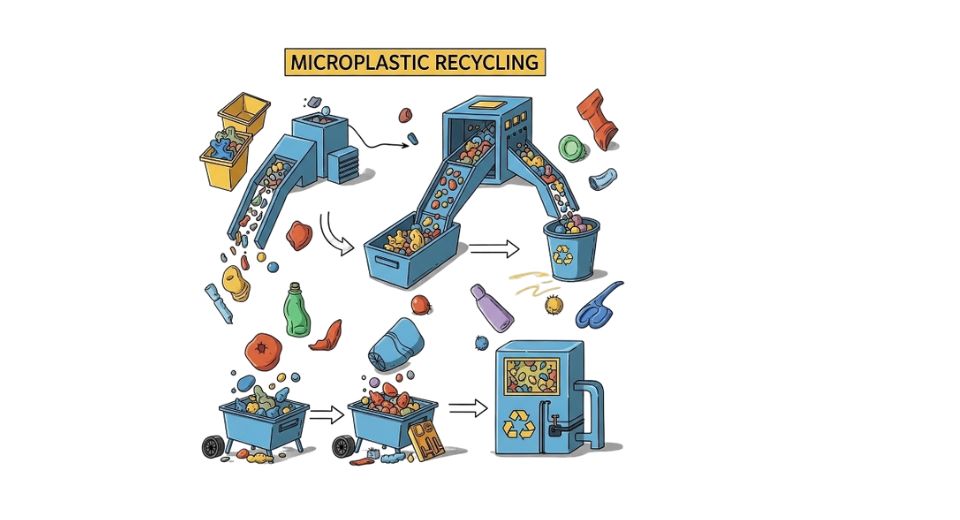
Jul 14, 2025

The recently published report by Metastat Insight on the Global Microplastic Recycling Market explores a terrain that has quietly emerged as important in ecological, industrial, and scientific communities. With the realization taking deeper roots around microplastics in our seas, land, and even food chain, discussion is transitioned from reactive remediation to proactive recycling and recovery. This report provides a sensitive insight into a sector of the recycling business that has traditionally worked in comparative darkness, now a subject of strategic interest. The document winds its way through the industry with a discerning vision, highlighting not only the technical innovations but also the more general effects on waste disposal, ecological integrity, and global collaboration.
The Global Microplastic Recycling Market has evolved with changes in environmental focus and technological abilities. Whereas recycling in a broad sense has an ancient and entrenched tradition, collecting and reprocessing microplastics involves a range of very different parameters. These particles, commonly sourced from man-made fabrics, broken-down packaging materials, and consumer items, are not suitable for conventional separation techniques. They need specialized detection and extraction mechanisms, and their treatment often overlaps with developments in materials engineering and science.
At the center of the discussion is an increasing appreciation of the way small contaminants may have outsize impacts. In contrast to larger waste streams, microplastics bypass filtration systems, invade aquatic environments, and even get ingested by living things. The International Microplastic Recycling Market, as raised by the Metastat Insight report, acknowledges this issue with an analysis of the mechanisms and approaches that are being instituted by different stakeholders. From municipal recycling programs to corporate investment in new chemical methods, it is implied that the solution to a problem that does not respect borders will be multi-layered.
What is so notable is the way that the market shows a intersection of commercial benefit and environmental stewardship. Businesses that work in this niche are not just doing so out of obligation or regulatory compliance but are also accessing a stream of resources that were formerly considered unrecyclable. The development of value chains for microplastic recycling is a demonstration of the advancement in perception as much as ability. This shift is beautifully portrayed in the report, wherein it can be seen that conventional restrictions are being replaced by creative avenues for resource recovery.
Another aspect to ponder is the influence of policy structures in deciding the direction of the market. With various countries placing rules regarding plastic pollution, new opportunities and limitations crop up for those wishing to enter this sector. Metastat Insight's research places context surrounding the variety of approaches being taken, illustrating how legislation can speed or hinder adoption of recycling technology. This interplay between policy and industry makes up one of the more engaging stories told in the report, and it illustrates both promise and complexity.
One of the interesting elements of the current debate is the widening of scientific cooperation. Governments, institutions, and corporations are beginning to see common interest in tackling microplastic waste, and this collective approach is now also shaping how innovations are applied. The Global Microplastic Recycling Market is no longer a laboratory or pilot-scale phenomenon; it is appearing more and more in industrial processes and supply chains. This development from idea to practice is among the strongest demonstrations of the increasing maturity of the market, a fact highlighted throughout the Metastat Insight review.
The technological foundations of the industry are also changing. Advances in spectroscopy, sensor technology, and separation techniques for materials have opened up new possibilities that were out of reach before. It is in these developments that one can start to discern the shape of a market getting ready for wider scalability. The report makes clear that sure, there are still problems--and ones that specifically revolve around standardization and throughput--there are also new practices developing that suggest long-term sustainability. These are not theoretical constructs but working practices being tested and, in some instances, implemented with quantifiable results.
In spite of its infancy, the Global Microplastic Recycling Market is slowly emerging as part of the larger conversation around circular economy solutions. It serves a specific purpose by addressing contaminants that are ubiquitous and notoriously hard to handle. In so doing, it supports wider waste reduction objectives while establishing its own specialist niche. Investors in this sector are not just focusing on adapting current tools but are designing customized solutions that account for the novel challenges of microplastic materials.
In the end, the market is at a point where incremental gains are leading into something larger. Every technological impediment overcome serves an instrumental purpose but is also proof-of-concept for something more ambitious. The Metastat Insight publication captures this fine balance, depicting a discipline that is hopeful but realistic in its portrayal of environmental science and industrial design.
In conclusion, the robust research provided through the Metastat Insight report on the Global Microplastic Recycling Market highlights a business that is at once nascent and critical. It takes the discussion out of the resignation usually evidenced by plastic waste and into a reality space characterized by innovation, collaboration, and an openness to confront one of the more evasive sources of waste.
Drop us an email at:
Call us on:
+1 214 613 5758
+91 73850 57479